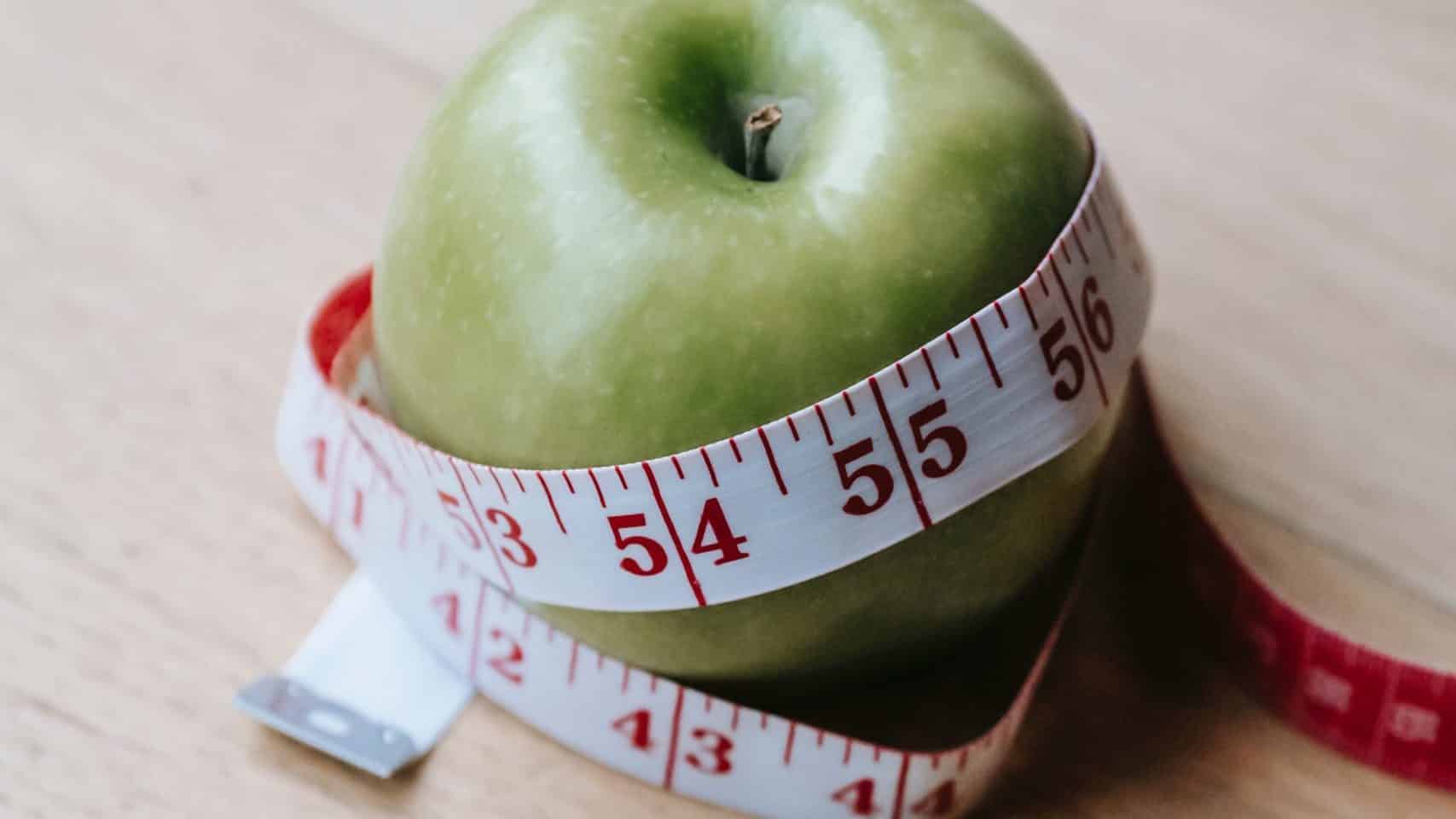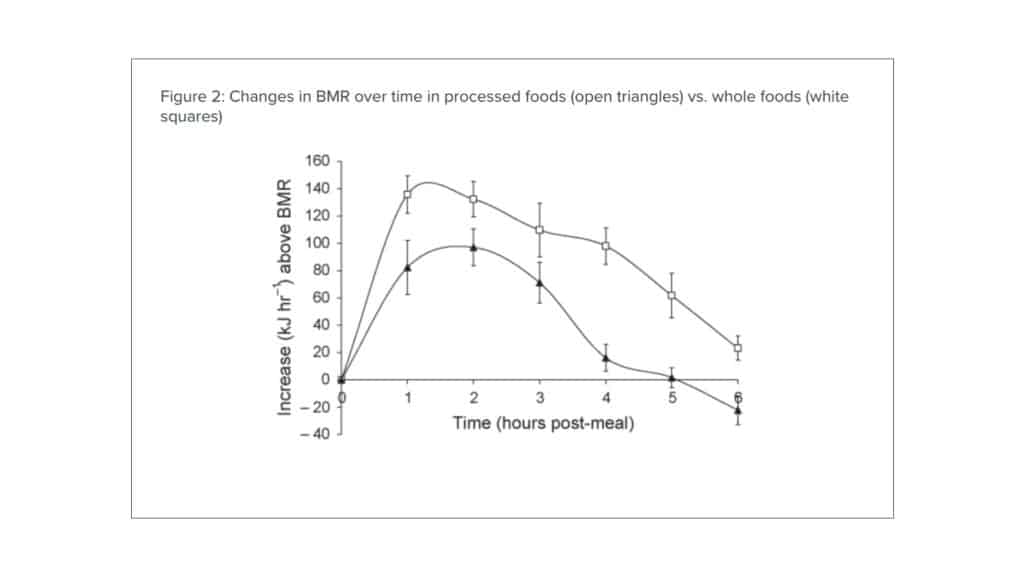 5-star Fitness
5-star Fitness
 5-star Fitness
5-star Fitness

You may have heard that losing weight is simply a balancing act: calories in versus calories out. This means that decreasing your caloric intake (eating less) or increasing your output (exercising more) will lead to weight loss. While this equation is true in theory, it is also extremely misleading as not all calories are created equally. I am going to dissect some of the reasons why counting calories is not going to be the most efficient method to reaching your weight loss goals.
Calories are a unit of measurement. Just as a mile measures distance, calories measure energy. One calorie is the amount of energy required to heat one kilogram of water one degree celsius. The way that this is measured is through bomb calorimetrey, where a piece of food is placed in a metal cannister and set on fire. The surrounding water increases in temperature and that is measured to determine the amount of calories in that particular food item. Dr. Roman Atwater, who discovered this method, conducted this experiment thousands of times, with hundreds of different food items. He then found the average to be 4 calories per gram for protein and carbohydrates and 9 calories per gram for fats. This average is now how most food labels calculate calories.
One concern with this calculation is that food labels are not always accurate. In 1990, the FDA mandated foods to be labeled in a standardized format. However, this law allows a pretty lax margin of error—up to 20 percent—for the listed value versus the actual value of nutrients. The other problem with this method is that our bodies are not incinerators surrounded by water. We undergo a very complex process called metabolism for our body to break down food into molecules that our cells can use for energy, growth, and repair. We metabolize food differently based on its properties and how it’s prepared. I will dive into three of the differences in food products that will cause a difference in how it is metabolized in our body.
A study conducted by biologists Barr and Wright (2010) examined how our bodies metabolize whole versus processed foods. The experiment had participants eat a sandwich and then track their increase in metabolic rate after the meal. One sandwich was the whole foods version with multi-grain bread and cheddar cheese. The processed version featured white bread and processed cheese product (aka American cheese). The two sandwiches were equal in calories, similar in their macronutrient breakdown, and there were no reported differences in how full the participants felt after consumption. However, the researchers observed that the energy used to metabolize the whole food sandwich was almost 50% larger than the processed option. The changes in BMR (Basal Metabolic Rate: The number of calories you burn as your body performs basic (basal) life-sustaining function) over time are represented by the graph below. This shows that the energy used to digest whole foods is greater, thus increasing your metabolic rate, aka burning more calories without additional movement.
This is because when food is processed, some of the work of digestion is being done before the food makes it to our kitchen. For example, brown rice gets the bran and germ stripped away to become white rice. Thus, our body does not need to spend energy breaking down fiber and can get straight into turning that white rice into energy. However, we want to increase the energy used to break down food in the digestive process (aka, our metabolic rate). Processed foods affect our appetite regulation and can cause us to overeat. Overeating over a period of time often leads to unwanted weight gain. Eating whole foods regularly increases our metabolic rate which helps us reach our weight loss goals more efficiently than a more processed options, even when they are labeled as “lower calorie”.

Time for some big words: the thermogenic effect of food (TEF). This references the increase in metabolic rate after eating, or the amount of energy it takes for your body to digest, absorb, and utilize the food you eat. The type of food and amount of processing it goes through will impact how much energy it takes to metabolize. At PFC we emphasize the importance of eating a balanced meal, meaning that we are eating lots of vegetables and foods from each macronutrient category at every meal: Protein, Fat, and Carbohydrates. Check out “Understanding Macros” for a reminder about portion sizes of each macronutrient per meal. These categories each promote different functions in the body: protein is essential for growth and repair, fat is used for hormone balance, and carbohydrates are our bodies primary source of fuel. However, our body does not metabolize all of these the same. In fact, the thermogenic effect of food calculates that:
Let’s take a look at almonds, for example. In a study published in the Journal of Nutrition in 2008, U.S. Department of Agriculture researcher David Baer concluded that “nuts are a food group for which substantial evidence suggests that the Atwater factors [calories] may be poorly predictive.” Bear found that whole almonds have about 20% less calories than the value calculated using Atwater factors (Mattes et al. 2008). This means that 100 kcal of almonds takes about 20 kcal of energy to digest, meaning a net of only 80 kcal. Therefore, having a higher protein meal plan, which emphasizes quality proteins, will help with our weight loss goals.
From the beginning of our individual existence, we’ve been eating for two—ourselves and our microbiome. Our microbiome is made up of billions of bacteria, so we really were eating for billions. To feed these bacteria in our gut, we must have pre and probiotics in our diet. Prebiotics are specialized plant fibers that act as food for the good bacteria. This can be found in many fiber-rich foods such as fruits and vegetables. Probiotics are live bacteria found in certain foods or supplements. These add to the diversity in our microbiome and can often be found in fermented foods such as yogurt and kimchi. A meta-analysis of microbiome studies of obesity found a significant decrease in microbial diversity in obese individuals. The loss of diversity in the microbiome is linked to inflammation and metabolic dysfunction (Le Chatelier et al, 2013). Including probiotic and prebiotics in our meal plan will ensure a robust, diverse microbiome that will work with us to maintain a healthy weight and promote longevity.
They are not always an accurate measurement of positive progress. They do not take into account how food is prepared or metabolized in our bodies. It is more important to focus on the quality of our food choices. Eating whole food, rich in fiber and nutrients is what will help us reach our weight loss goals while also sending good information to our body to help regulate all the necessary processes of growth and development.
Written by Delaney Smith
PFC Nutrition Educator and Dietary Coordinator
Certified Nutrition Coach
Candidate for MA in Applied Nutrition and Dietetics
Citations
Barr, S. B., & Wright, J. C. (2010). Postprandial energy expenditure in whole-food and processed-food meals: implications for daily energy expenditure. Food & nutrition research, 54, 10.3402/fnr.v54i0.5144. https://doi.org/10.3402/fnr.v54i0.5144
Frame, L. A., Costa, E., & Jackson, S. A. (2020). Current explorations of nutrition and the gut microbiome: a comprehensive evaluation of the review literature. Nutrition reviews, 78(10), 798-812.
Le Chatelier, E.; Nielsen, T.; Qin, J.; Prifti, E.; Hildebrand, F.; Falony, G.; Almeida, M.; Arumugam, M.; Batto, J.M.; Kennedy, S.; et al. Richness of human gut microbiome correlates with metabolic markers. Nature 2013, 500, 541–546.
Mattes, R. D., Kris-Etherton. P. M., Foster, G. D. , Impact of Peanuts and Tree Nuts on Body Weight and Healthy Weight Loss in Adults, The Journal of Nutrition, Volume 138, Issue 9, September 2008, Pages 1741S–1745S, https://doi.org/10.1093/jn/138.9.1741S